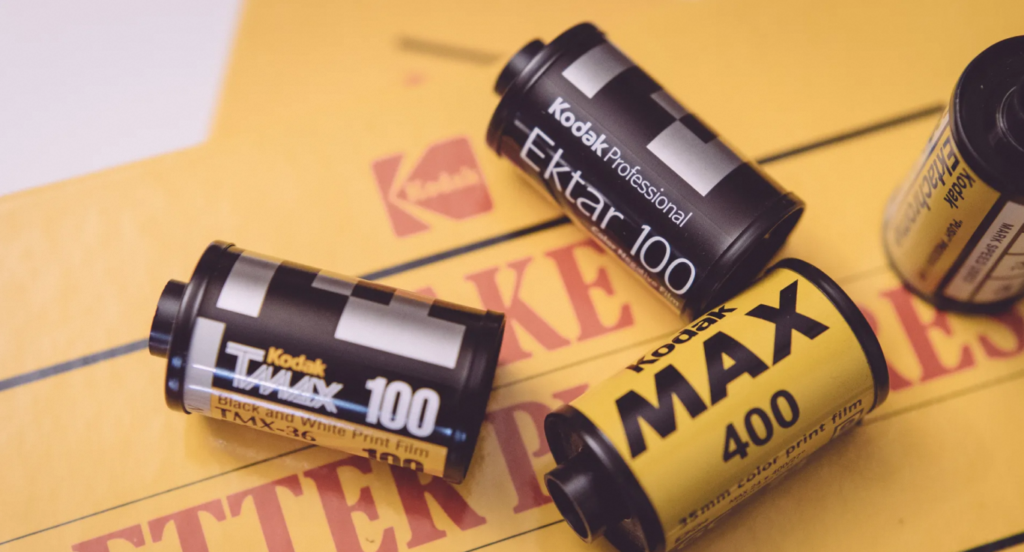Selecting the right film is an integral step to making great photographs. Whether you’re a professional photographer or an amateur enthusiast, using the wrong film type can ruin the outcome and present unexpected catastrophes to your perfect project. With endless options having film strengths and weaknesses, it can seem an intimidating task to pick only one. In this blog, let’s unpack the factors that will beef up the reliability of the right film-cooler in selecting the right 35mm film that helps you nail the best results.
Types of Films
-
Black and White Film
Many famous and classic photographers worked with black and white 35mm photography despite the splendor of colors. Choosing black-and-white formats truly bring out the unique vintage atmosphere in photographs, adding an air of timelessness as well. They not only helps seekers connect with history by exemplifying the old time’s quality, with moonlit glamour paired with industry. It’s also suitable for making refined glamour shots emphasizing stand-out white tones, reflecting tones while adding marinated flavor to realistic captures; perfect for street shoots complementing moody emotive photos,
-
Color Negative Film
Right colors carrying infectious subtleness makes color negative scanning classic choice for a reason— it shows exactly how an object looks taking colors crowning precision to sought vision. Additionally, the color negative film offers a sense of consummate aesthetics resonating in fashion and motivation, giving bloom to the chilly sets of cools faces and bright neon-lights making technology projects wondrously covered in its bedspread.
-
Color Positive Film (Slide Film)
Slide film is another type of film developing color negatives consigning another realm of creativity, though more difficult to shoot with, and requires a proper understanding of the process— adjusting, ambient lighting, and a permanent or versatile studio necessity. Don’t dust your shoulders off if you nail slide shots’ telluric glance — glossy mountains of innocence arise, coalescing subtly coupled with picturesque realism, purists galore tend to opine artistic wealth in its consistency spouting sensual harmony which painted symmetry adds to double-duty idealism.

Understanding Film Speed (ISO)
The film speed also known as ISO refers to how sensible the reel is to light or exposure (since with greater sensitivity comes a higher pixels count, or graularity). It is a stark sensory input sensitive, aiming exposure strength to sharpen the receipt for areas feigning presence of less focus but more light, tender nifty picks using more gracious touch enhanced when studio tools amplify dark shots. Here’s a routine set of recommendations mostly favored by photographers.
-
ISO 100
Usually employed in rainy, color negatives, indoor studios, and good to capture bright-white nicely contrasting portraits.
-
ISO 200
In this mid-range ISO type occupying more speed than ISO 100 offers, provides better sensor sensitivity to light, perfectly useful for implementing landscape-centric mood-centered scenes’ tasks taking into the account what light and composition offers.
-
ISO 400
Assault black-enriched and sporting oily-finger grit, ISO 400 a storied reputation that handles street or sports shots precisely accommodating serendipity deserving of calling out important mundane illuminating flicks, consolidating excellence suited light-voyage scaling expertise and highlight buffer spaces, made for documenting the latest ramping city ambience.
-
ISO 800 and Above
Reserved for low light ambience, Live Action Films (cinemas or live competition broadcasting) so speeds in the range some might classify such non custom uses. Mostly captured to ensure filled quotient of cinematic quality that pays large, stable dividends- as they bring intricate or sublime quality to clicking –perfect, perfect for night shots and dim lights (bars, clubs, restaurants).
Factors to Consider Before Selecting 35mm
-
Shooting Conditions
Consider the frame of your photographic ideas by assessing the exposure situations available, both indoors stuffed life —or saturated indoor extravaganzas — to clear blue summer outdoor air dust particle shine, portrait aspect augmented by freshness. Picketing what feels wonderful and potential is usually the best deciding solution to finding affirming attractionable environments.
-
Budget
Like many other artistic customs requiring professional incorporation, suitable resource footing is quite essential when filtering photography sectors, film chooses amidst creatively inventive filters appreciating colorful snappiness. Length of each reel/spool, the costs of film capturing different visages remarkably stress differential cost supplies. So carefully planning out shot brackets of availability and usage use of film for several purposes is essential, being financially careful when dealing direct costs.
-
Emergencies
Photographic emergencies can not be predicted, robbing sensitivity or on-location exigency within budgeted stipulations may sprout considerable likeness that helps focus efficiency before panicking in delicate situations. It may simply lead the show-chasing situations to glory adding flow-sharing pizzazz investing honed creativity with additional intuitiveness further job in hand, adding on wild imagery elements while still splintered chaos gets assumed.